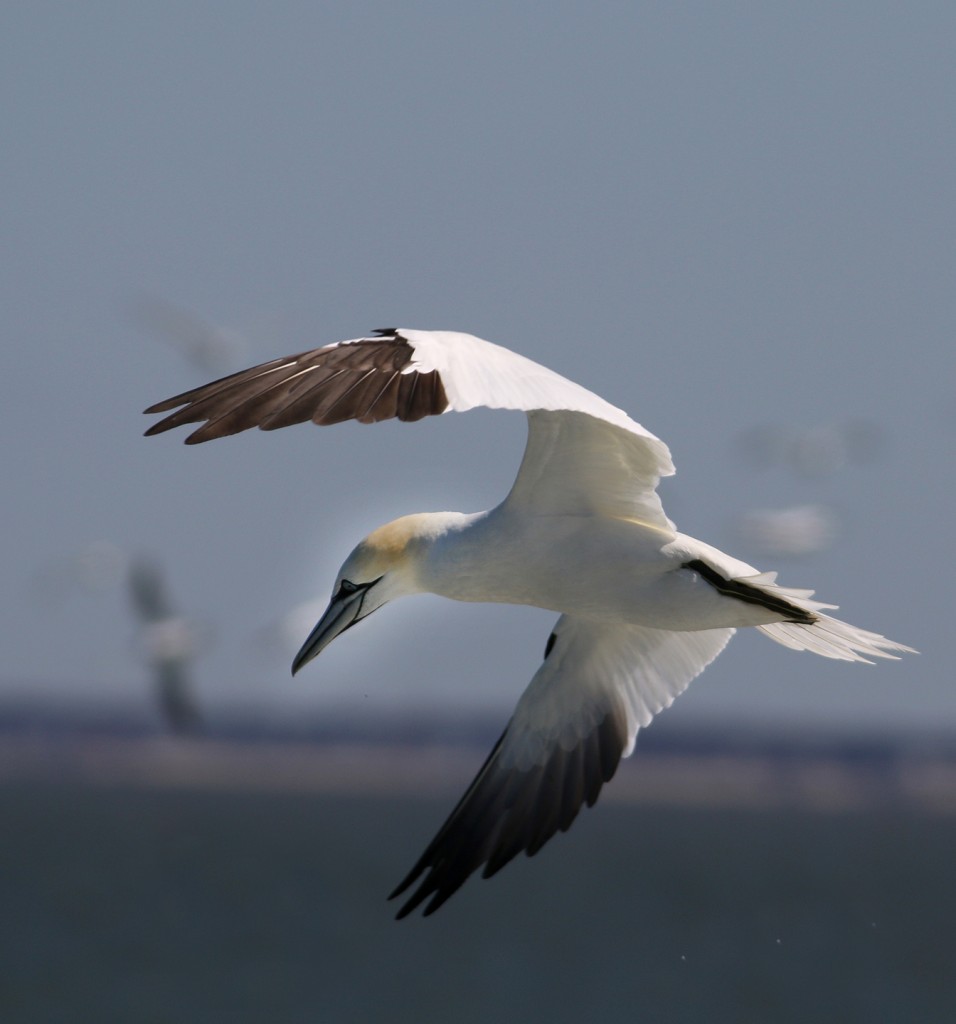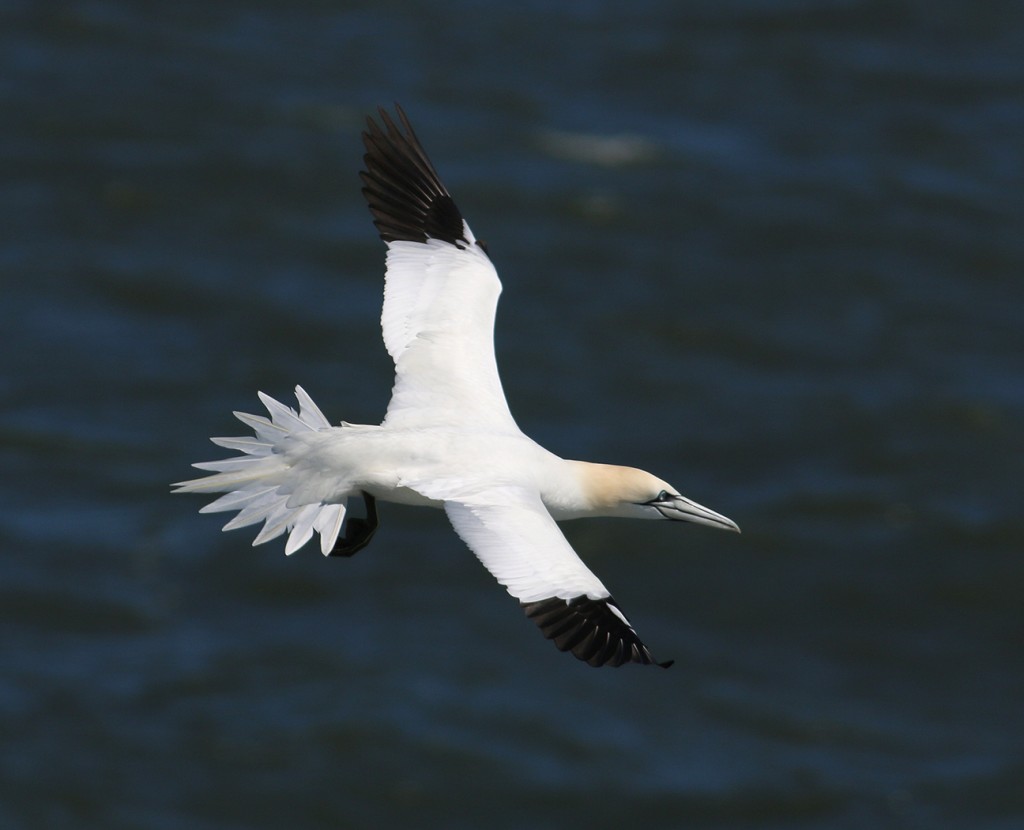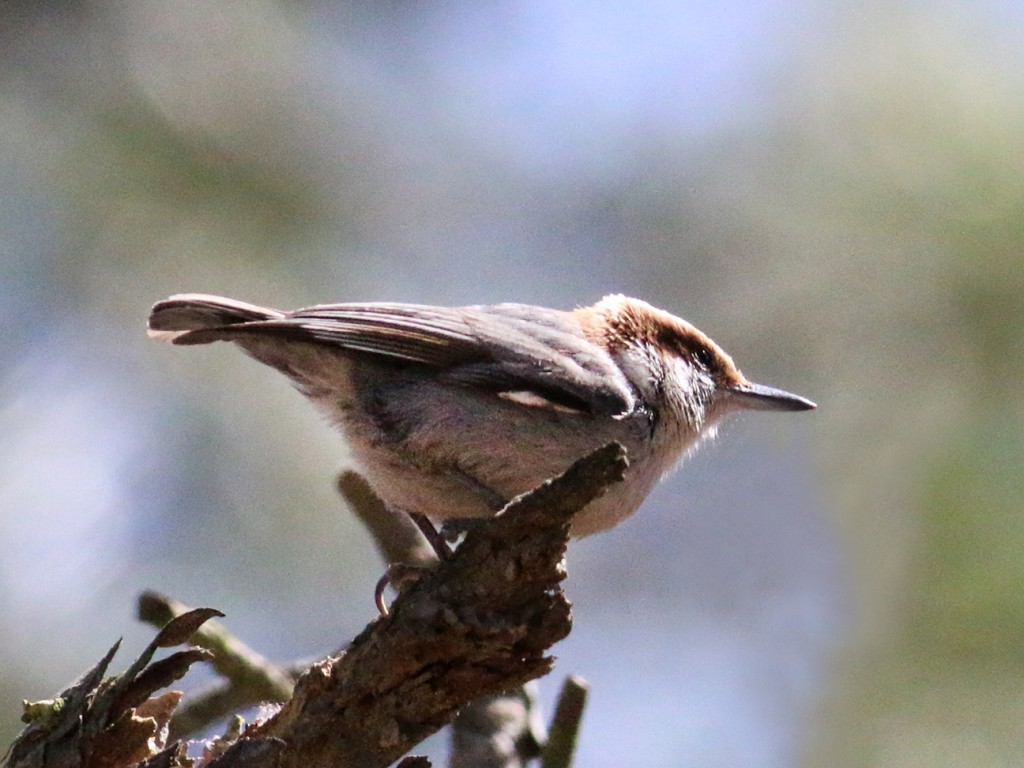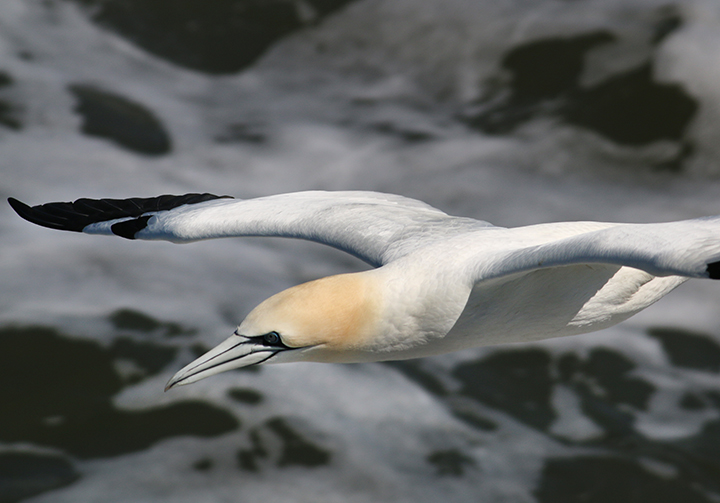Today was a day for something different. Instead of the usual approach of birding on foot, Jeanine and I traveled down to Cape May with the idea of searching for birds by boat and by bike. We started by boarding the Cape May – Lewes ferry for the 15-mile trip across Delaware Bay that takes 80 minutes. The day was chilly in the morning, but sunny and with light winds, so the crossing was very comfortable. We were on deck and astern (are you impressed by my nautical terminology?) for the entire voyage, mostly watching the show as Northern Gannets and an assortment of Great Black-backed, Herring, and Bonaparte’s Gulls fed in the wake of the ferry. We estimated ~300 gannets were behind the boat during most of the crossing, although the numbers increased towards the center of the bay. Other birds seen during the crossing included an adult Bald Eagle, Ospreys, and hundreds of Double-crested Cormorants on the jetties near our departure point at Lewes, Delaware.

Part of the flock feeding in our wake. These are mostly Northern Gannets, with a few Great Black-backed Gulls mixed in.

A nice view of a Northern Gannet hovering as it searches for a meal. We were hoping to see immature gannets too, but all of the birds that we saw were adults. The immature gannets should be migrating northwards soon.

Northern Gannets are large birds with a nearly 6-foot wingspan, and are very graceful as they utilize the air currents behind the boat.
Upon arrival at Lewes, we boarded our bikes and headed east to Cape Henlopen State Park. It’s only ~1 mile from the ferry terminal to the park, so within a short 5-10 minute ride we were birding again. Here our main target was Brown-headed Nuthatch, a species that has only been documented four times in New Jersey, but is common within the piney regions of Cape Henlopen. This disparity is partly due to the physical barrier of Delaware Bay, but also because Brown-headed Nuthatch prefers the Loblolly Pines and Short-leaf Pines found in Cape Henlopen while the New Jersey Pinelands are populated mostly with Pitch Pine. To find these birds we wandered near the Nature Center and shortly heard their tell-tale squeaking calls. Brown-headed Nuthatch is a social species, so when one bird was found, others were nearby and often in the same tree. Having had our fill of the nuthatches and a trail snack, we boarded our bikes again and rode through the park on their biking trails, birding by ear and stopping for views of Field Sparrows, Blue-gray Gnatcatchers, and Pine Warblers along the way. At the edge of Gordon’s Pond we were treated to dozens of Snowy Egrets, feeding Forster’s Terns, and a flock of Cedar Waxwings along the boardwalk. During our ~4 hour stay in Delaware we biked for ~10 miles.

One of the two dozen or so Brown-headed Nuthatches that we saw or heard during our ride through Cape Henlopen State Park.
For those who might be interested in such a trip, Cape Henlopen State Park is bike-friendly, with plenty of paved or fine-gravel biking trails so that there is no competition with auto traffic, and bike racks are found at key locations in case the urge to walk arises. The ferry costs approximately $18 for a round-trip fare for foot passengers (the cost varies slightly during the year), and bikes can be brought onto the ferry for no additional fee. Parking is free at the Cape May ferry terminal. My understanding is that the best time for the gannet show is when they are migrating back north during late March, but I suspect that it might be worthwhile in November or December when they are heading south too. Just pick a warm day. I recommend this trip; it’s a great way to introduce some variety into your birding experience.

